The UK government has reiterated its full commitment to the AUKUS partnership amid a review of the pact launched by the United States, saying the trilateral initiative remains a cornerstone of national defence, economic growth, and international security.
Responding to a series of parliamentary questions from former Defence Minister James Cartlidge MP, Defence Minister Maria Eagle said AUKUS continues to enjoy bipartisan support in Washington and is backed at the highest levels across all three partner governments.
“AUKUS is a landmark security and defence partnership with two of our closest allies,” said Eagle. “It is one of the most strategically important partnerships in decades, supporting peace and security in the Indo-Pacific and Euro-Atlantic, while also delivering jobs and economic growth in communities across all three nations.”
The review by the US administration follows a change in leadership and is seen as a routine reassessment rather than a signal of disengagement. The UK has itself conducted a similar review — the Lovegrove Review — to update its own strategic posture.
“It is understandable that a new administration would want to review its approach to such a major partnership, just as the UK has done,” Eagle said. “We continue to engage with the US Administration at every level. The Defence Secretary and Foreign Secretary regularly discuss AUKUS with their US and Australian counterparts and will continue to do so during the review process.”
The UK government stressed that commitments made in the recent Strategic Defence Review would serve to strengthen AUKUS, particularly through continuous submarine production. Investments in Barrow and Raynesway will support the building of a new generation of nuclear-powered submarines under the SSN-AUKUS programme.
“We expect over 21,000 people to be working on SSN-AUKUS programmes at its peak, both in UK shipyards and across the supply chain,” Eagle confirmed.
The government is aiming to produce a submarine every 18 months, allowing the Royal Navy to grow its nuclear-powered attack submarine fleet to as many as 12 SSNs, with final decisions to be made under the Defence Investment Plan.
This planned expansion is intended not only to meet AUKUS obligations but also to support the UK’s Continuous At-Sea Deterrent (CASD), which remains a foundational element of the country’s national security strategy.
The MoD says the UK will continue to work “closely with the US and Australia at all levels to maximise the benefits and opportunities which AUKUS presents.”


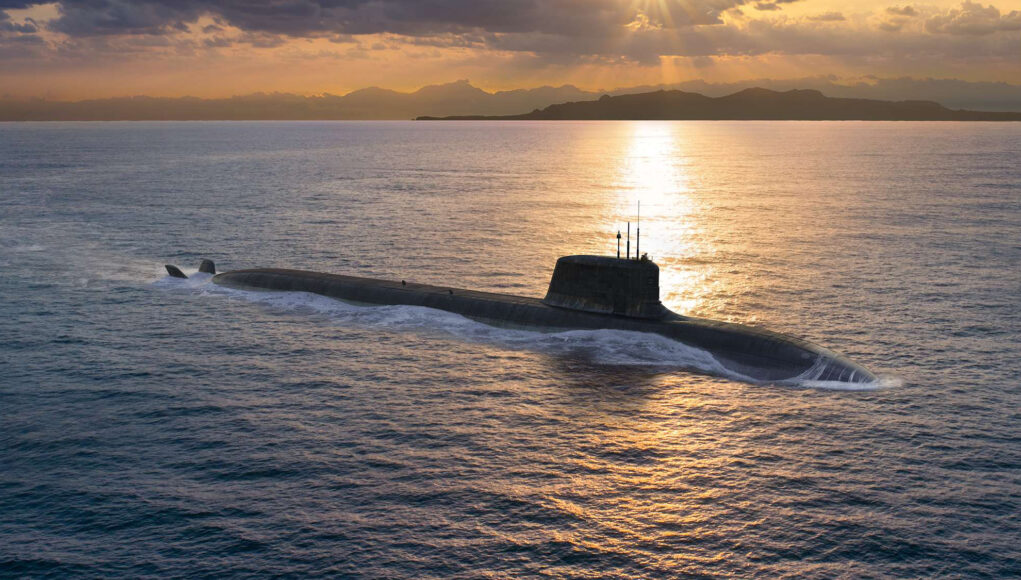
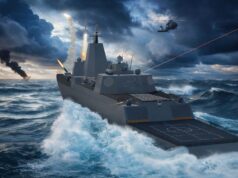
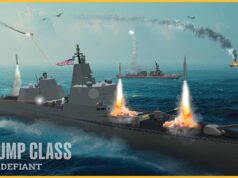
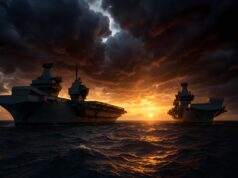
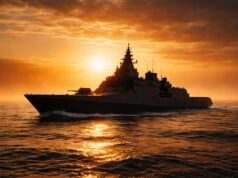

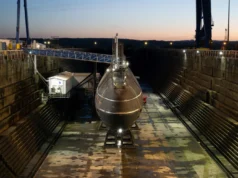
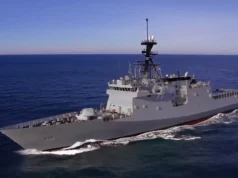
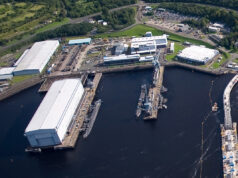
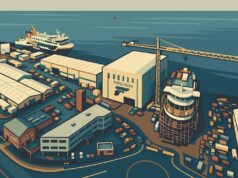


I’m sure this will get through the current US administration review. However the Australians will cancel it eventually. Australian politics is a farce even compared to US politics and a project as large as AUKUS will invariably get chopped by some party or PM wanting to make a name for themselves.
Australian TV “news” is a wash of never ending “experts” and talking heads telling everyone how there is a better solution costing much less if only someone would listen. (The same experts who said the F35 was inferior to the F16)
The same goes for their surface ships. A country with close to no manufacturing base and some of the highest labour costs in the world insist on building its own surface ships then inevitably discovers cost are massive and delays are great, inevitably the Australian media seeks to blame what ever foreign ship builder they previously pulled in for the project because it couldn’t possibly be the Australians at fault.
It’s was Navantia with the Hobart class that was the devil while BAE was the white knight.
Now it’s BAE that is the devil because the Hunter class doesn’t come with 100 missile tubes and cost more than $100 a copy and it’s Germany and Japan that are to be the new saviours and will make state of the art frigates in Australia for next to nothing. No mention in the Australian press of how the UK is knocking out T26 on budget or even Canada is starting the same.
Hopefully we get the cash from them for Barrow and Derby production enhancements and we can use the extra capacity for our own Submarine production.
No nation in the history of the world has been offered access to technology like AUKUS pillar 1 and treated it like they are doing everyone else a favour.
Countries like India, China or Japan would gladly give both testicles for weapons such as these 😀
The CSC project is hardly going swimmingly from a budget perspective, though it is doing better than the Hunter-class. That said, I agree that the Australians do seem to struggle even more so than the UK with ‘sticker shock’.
And yet the Australians get far more bang for buck of GDP compared to UK.
AUKUS principals will continue to ‘muddle thru,’ as you Brits often claim. 😉😁🤞🤞
Yeh, we do like a good muddle 🙂 😉
Cheers CR
A lot of the ‘muddling’ with AUKUS is with the Americans not the British, geez our contribution to it is only in its infancy stages presently ie training, getting infrastructure and preparations in place to enable it. The submarines aren’t even fully designed as yet so any criticism is Australian internal shit stirring and disagreements as is the Australian way. Getting US submarines and support is the real problem as things stand. Just wait till the AUKUS subs start to get built mind if it gets to that point, nuclear is a big commitment and they have to understand that.
The RAN will will struggle to run the Virginia Class subs, the USN plans to sell them, I think. I be surprised if RAN gets more the six AUKUS subs!
It’ll continue as it has bipartisan support down here, and there’s no Plan B.
While our media can mount campaigns that topple industries (Mitsubishi in Adelaide for example), we are also infested with a lot of WuMao trolls (I think that’s the term) and some ex-politicians who would like other powers to butter our bread for the future – they are not representative of our current state of alarm.
Every time a large militarist-expansionist power rises in North Asia, an existential threat to our nation ensues.
Australia seems to have gone through a ‘lost decade’ of submarine and frigate procurement, the bungling of successive governments after the 2009 Defence White paper mostly responsible. In other procurement we are doing better, for example our Canberra class and the force structure they are able to deliver.
Even as recently as about 2012, our whole economic boat was tied to selling the resources to a north Asian power that was increasingly liberalising… well, we can see how that has turned out. We’re optimists, historically.
And there are some Aussies who can see how well the UK frigate construction is going, give you credit for it, and are glad we’re getting a T26 variant and the next generation subs beyond the Astutes.
Blimey, you mean there are people out there who think the frigate programs are actually going well! Well who’d da thunk it! 🙂
Just for the record I would agree given the hiatus in warship construction and the resulting loss of corporate experience and knowhow the two programs are starting to gain traction and investment so we now have 3 new frigates ‘in the water’, well a couple are back in dry dock for fit out reasons, but they have had their keels wetted. So that and the fact that investment in maintenance infrastructure for the new subs seems to be making progress as well and there is light at the end of the tunnel for both the surface and submarine fleets. If we are sensible and order a few more T26 and T31 it will represent the first expansion in the size of the RN fleet in my lifetime, and I ain’t no spring chicken any more…
Having Australia and the US on board with the AUKUS boats will make cuts all the more difficult politically so having the MoD talk about up to 12 boats for the RN is setting expectations that would have serious political / diplomatic implications with two close allies if we back track…
Cheers CR
Well said sir, we only get the bad news here, as we tend to with our own programmes it’s the nature of much of the media, so good luck on getting things right, big power toys do have their problems along the way and no one is immune from that.
“Australian TV news is awash of/with never ending “experts” and talking heads”.
They ain’t got a patch on us lot.
” you better run, you better take cover” “I come from the land down under, oh yeah”.
But what does Kylie have to say on the matter.
Okay you lot up there…no need to bash 🇦🇺 over its procurement! Agree though the news coverage can be a bit cringy with all the whinging going on with every ship and sub coming. Really surprised they just can’t get things right.
With the subs, why don’t thry have a plan (su)B and get a top up 3-4 diesel subs in the meantime time and not run the risk of having nothing or not much going with the Collins. They’ll still be useful for littoral regional patrol.
And the light frigates. Bloody hell, talking about stuff-ups, the UK sure missed the boat with that one! 11 ships.! What happened with the A140 there?! Aus is faffing around a bit on the choice. I joke to myself that if they want more ships fast make a decision or go for a split buy…Meko for the West-North and Mogami for the East. Regards to ol’Blighty from 🇦🇺.
Australian Navy wanted a ship that was already in existence, otherwise T31 would have been a contender.
The A140/T31 had its ancestor in the Iver Hurtfeildt which they could have gone with. Maybe the spec wasn’t enough for Aus but Poland and Indonesia have gone with it. Be interesting to see if NZ follows Australia’s choice of goes different.
That went well for the US and the Consternation class didn’t it.
That’s actually a massive case in point of how not to buy a class of Frigates, the USN / Industry hadn’t designed or built a successful ship since the Los Angeles, AB’s and Nimitz. The LCS, Zumwalts, Virginias and Ford classes Al had problems, 2 of them have been a fiasco, so Congress decreed they wanted a tried and tested design which wasn’t to be altered by more than 20%.
They chose the Italian version of the FREMM which is an excellent Frigate and if they had just changed the sensors and weapons systems it would have been a great asset.
Then the USN got hold of it, US damage control, extra space, more weapons, higher power needed etc etc so design is no bigger and has only 20% commonality with the FREMM.
I think also that what with all the blame on Britain over T-26 (mostly unfair but since when is fairness a factor) it was easier to look elsewhere. Sadly politics has its priorities and takes precedence over capability and quality much of the time. Hey it’s why the US got the F-22 rather than the F-23 and it did look good doing tricks it likely would never use in combat.
OMG, that is precisely the same rationale which dictated the selection of the Consternation Class for the USN! Aaarrrggghhh!!! 😱😱😱☹️
Paul Bestwick,
Sorry sir, did not read your comment until after posting myself. Some minds think alike.
They didn’t chose the Constellation class they chose the Italian FREMM, then made a complete hash of it and renamed it. It may surprise you to know but IMHO they didn’t really need a large ASW frigate, but something a bit smaller and able to be built in numbers.
The T26 and its 2 derivatives will be superb vessels but as they wanted an existing in service ship, so why didn’t they develop a higher spec version of the USCG Legend class that HII offered ?
And then churn the damned things out at a decent cost !
“You’d better run all day and run all night…”
US gets:
Sub building capacity paid for by Aus. Help with design from UK. To sell CMS and weapons to AUS. A place in Aus to repair subs.
UK gets:
To build new subs for Aus and decrease own per unit cost. A place in Aus to repair subs. Gets to sell the setup and training package for infrastructure to Aus.
Aus gets: Old US subs as interim with (I always thought this bit was BS fantasy) World beating nuclear powered subs and supporting infrastructure and industry.
That’s all without getting into the share of the dozens of other systems in play.
If, if… the UK reactors are no longer subject to US export restrictions. The US is the only one that would lose out by pulling out. Doesn’t mean they won’t but the UK has been training Aus crew on British CMS and our torpedos are a step above should Aus go that route. Plus the UK is going to build it’s own anyway.
“Aus-Mo-Sis”.
“Come on, you can work it out”.
“Australia is a lucky country run mainly by second rate people who share its luck.” – Donald Horne 1964.
He said it in terms of the richness of resources, agriculture, and opportunity here and how we tend to coast on it and produce or be dominated by mediocrity while remaining comfortable. Hugh Mackay’s introduction to the Penguin edition of the book of the same name, sees ‘philistinism, provincialism and dependence’ in that 1960s time period. I myself saw teaching grads getting 35K per year while you could just go drive a mine truck and get 160K – so there was this perverse flipping upside-down of what you might consider education as being able to level a person up with. Bet on the dumbest stuff you can, and do very well. The lowest common denominator rather than Oxford or Cambridge. My parents were bewildered by these outcomes, having had their formative years in the Old Country.
So ‘The Lucky Country’ also became a self congratulating term, like ‘Ah, we’re living in God’s country’ as you might reflect upon a grand country sunset with a beer, after a day of work on the harvest.
However, this run of luck is running out. By betting on the easy stuff like real estate, prices have been pushed to truly unaffordable levels and the opportunity of the past is much, much harder for young Australians today. The irony is that we have so much land (any flight over the country will show you this) and yet nearly all activity is crammed into the capitals, at nose-bleed pricing. Our high production costs, high AUD and lack of nurturing have created Dutch Disease and eviscerated our industry.
In terms of defence, we were caught out in the late 1930s with too little re-armament and will be so in this situation, as well. Post WW2, the Curtin government set up an ecosystem of self reliant industry, which was dismantled after the 1970s for betting the farm on financialisation, then resources, then population growth. You are watching our government try to reanimate the defence industry and struggling at first, presently. Britain seems a little further ahead, and I’ve been reading UKDJ to follow this for a few years now.
In the end as long as you are not profoundly behind your resource and geostrategic position will win out Australia has about trillion dollars of natural resources ready to be dug up. Land wise Australia could feed around 130 million people.. but it’s current food production is only at about 70-75 million worth..
Essentially Australia could move to a population of around 130 million and still be food self sufficient. What is holding Australia back is that due to geography and the difficulty of travel it never got vast influx of migrants the US did, between 1880 and 1930 the US had 23 million immigrants. When you look at Australia its population in 1901 was an anaemic 3.7 million vs a U.S. population of 77million.
Basically Australia failed to take advantage of the great European diaspora during the late 19c and early 20c and has not managed to fulfill its true potential… if it had fully exploited its land and resources and got its population to 100million during the 20c it would have become one of great geostrategic powers in the world. Essentially the profoundly racist migratory practices ( essentially a British focus migration) did not serve Australia well in the end..as the UK simply did not have the population base to colonise a whole continent.
20 trillion dollars of natural resources no a trillion.. we need an edit function
Hi Jonathan,
Australia might have a problem with expanding its population. Water.
I read somewhere a few years ago now that Australian water reserves are not being replenished, they simply do not have the rainfall. Australia is the driest continent on the planet my some margin. Land clearance has also fouled the ground water supply in some areas because as the trees are cleared in some areas the water table has actually risen but becomes salty as it rises (or is already salty) actually needs up damaging the land as it has it rises so instead of improving grazing the farmers have ended up with poor grazing. This was a few years ago so may be they have solutions for some aspects of the challenges?
Long story short my understanding is that the Australian population is already stressing the water supply so 120m people might not be possible.
Cheers CR
Australia doesn’t have the water for massive increases in Agriculture but it’s got plenty do have a five time increase in population. There are ten million people living in the UAE now with barely any rainfall.
Some agro is not water intensive.. it’s only the fact that we like high water intensive farming..you can develop your agro system into a low water system.. pulses, ragi, bajra, moong, gram and guar etc don’t need irrigation just a bit of rain now and then if they are lucky.. also you move your meat production to low water need animals..some sheep and goat types etc.. you can grow a lot of food on without a lot of water if you plan well.
Australia is struggling with an affordability and a housing shortage crisis and infrastructure lagging behind plus need for more clean energy. Same issues for other countries. We can’t just let anybody in. Government and our votes will decide that.. Population already 27mil.
Interestingly climate changes are actually impacting positively on net rainfall in Australia.. while at the same time suffering from reduced ground water.. the majority of the continent’s is seeing significantly more rainfall now ( last 30 years) with the north getting a lot..only the very tips of south west and south east Australia have seen a net rainfall reduction due to climate change.. so most of the continent’s getting hotter and wetter.. but rainfall is become a less frequent but heavier event.. essentially Australia needs to more than any other nation actively manage its rainwater and develop its water supply infrastructure.. moving it effectively into secure groundwater supplies.
Johnathon,
OK, I’ll bite (😉🙄), what the hell are pulses, ragi, bajra and moong?!? Here in the Colonies, we are familiar w/ crops such as barley, corn, soybeans and wheat. We jus’ don’t cotton (🙄) to them thar new newfangled ideas (best approximation of a Southern drawl). Meanwhile, time to consult Mr. Google …
They probably need very large scale desalination with the power coming from either nuclear or huge solar fields- they certainly have the land mass for solar energy and should crack on and get the schemes built now- learning from the UK to not leave it until the infrastructure is already desperately needed before even beginning to build it and then in 20 years time when the infrastructure is finally built realising it was built big enough to cope with the growing populations demands.
Not enough Criminals back then.
Too far for rubber boats now.
(Don’t know who this will get to or where it will go but hey ho.)
Hi Jonathan, you can see the land on a map and it looks like a lot, but…
The Dead Heart.
That’s a term from our literature, I believe. Unlike the vast fertile prairies of the USA, the interior of the continent is inhospitable and not applicable for agriculture in a European sense. Cattle stations, yes. But anything else, no.
It is difficult to convey just how vast this arid landscape is. The ENSO weather patterns that dominate the continent also do not lend to established seasons and agriculture. There’s just ‘water’ and ‘no water’ with no predictability. So the civilisation clings to the southern fringes that get enough cold fronts in winter to provide wheat belts, the east coast with it’s tropical influence. The north may look tropical with lots of water, but is also subject to variability of monsoonal seasons.
The settlers tried pushing agriculture to it’s limit – like north of the Goyder line in SA, all the way to Broken Hill even – and you can see the abandoned stone farmhouses overgrown today, as they were abandoned.
Anyway, despite all that it’s still the greatest country on earth and has such amazing beauty instilled in parts of the landscape. Lake Eyre is filling currently and will be in flood for months, a vast inland sea forms maybe a few times a century and all the animal life that flocks there is staggering to see.
If anyone wants in in-depth read on Australia’s natural (man-made!) environment, I recommend ‘The Future Eaters’ by Prof Tim Flannery.
Geez seems whinging Poms is a disease that spread way back then, or perhaps just a cover.
Most comments here blaming Australia…except, if we move past the fact that they reneged on a French deal and signed a new one with US/UK, it’s really the US that is pulling all the strings and causing delays either with actions or by instilling doubt through inflammatory comments
The big issue for the pacific nations is they are effectively facing a future tsunami of Chinese submarines and submarines china is supplying to future allies such as Pakistan.
The U.S. nuclear fleet is estimated to drop to about 41 boats in 2029 to cover the globe..china is likely at that point to have over 70-75 submarines.
The most worrying elements are china has:
1) pretty good electric and AIP submarines due to both western and Russian tec exchanges ( we gave them our very good AIP systems and Russia sold them the very quite improved kilo class ).
2) SSN design maturity.. the type 93 has finally matured into a competitive SSGN with the latest model the comparable to a Los Angeles class or late victor 3 class…and that is with a duel reactor..they essentially have peer quieting but the duel reactor holds them back.
3) the Russians have handed over reactor tec that has allowed for the type 95 to be a singe reactor SSS, this has been laid down so the new Chinese SSN will be a peer to last generation, possibly even close to current generation.. but it’s going to be as good as an improved Akula..
4) the SSNs and new AIP china is now building have vertical launch tubes and they have a good 1500km to 2000km cruise missile with a CEP of 10m…
5) china has the capability to lay down 20 nuclear boats concurrently and is launching them at a rate of about 3 a year now.
6) china may have turned their AIP boats into hybrid nuclear boats..this would give them strategic range
7) china can build about 2-4 AIP boats a year.
Essentially china can only out produce the entire western world on SSNs and AIP boats… and it’s turned the taps on, launching 8 SSNs in 2.5 years.
Maybe we should “Sub Contract” them to build ours, that’s if they prove not to be “Sub Standard”.
I’m not sure the RN is quit as radiant as the PLAN.. glow in the dark Matelots would scare the residents of Helensburgh.
Are the Chinese reactors that iffy? I know Russian reactors used to be (and probably still are) a tad iffy on the radiation front. A RN frigate disappeared behind a wall of salt water spray when it was still a couple of miles distant from the Kirov onetime – so I would say the Russians had glow in the day time cruisers let alone glow in the dark Matelots..!
If the Chinese reactos are that bad they are going to struggle to maintain experience in their crews..! 🙁 Grim. The Russians didn’t call their early SSN widow makers for nothing.
Cheers CR
They were, there is a reason they decommissioned the first 2 type 91s as soon as they could and that was mainly Reactor related issues. There are still stories about the remaining 3 type 91s. But for the type 93s the real issue they had was power density, the type 91s reactors apparently got to about 50MWt in their reactors as were essentially pig slow.. with the type 93s they have got it up to about 70-75 MWt per reactor and moved to double reactors to hit 30knots.
For the first test type 91s the US assessed them as follows:
“Significant corrosion issues purportedly
caused leaks from the steam generators, main coolant piping valves, and reactor coolant pumps that,
somehow, allowed radioactive primary coolant to find its way to theoretically sealed off secondary
drains in the engineering spaces.14 There were also claims of high radiation levels that adversely
affected the crews. In addition, there were issues of poor-quality machinery components in the main
propulsion system, to include defective pumps, condensers, and the reduction gear.15 In short, the
entire main propulsion system had significant reliability problems.”
They then lengthened to hull of the batch 2 Type 91s for more engineering space to support reactor safety.. but the US still reckoned
“There were still concerns about the reliability of the
propulsion plant, however, and the first deep dive to 300 meters was made by Han hull 404 (fourth in
the class) in April 1988, fourteen years after hull 401 had been commissioned.”
The Type 93 got a whole new reactor..that’s reliable but to a lower power density than western or Russian reactors.
The Russians handed over their pretty decent 3rd generation mobile reactor in the KLT-40S with a decent power density at 190MWj..the Chinese then built on this to produce the ACPR50S a SSN sized 3rd generation 200MWj reactor..essentially the last step in matching western SSNs.
While Australia has many strengths not least its people it’s the countries politicians that are holding it back. An obsession with manufacturing jobs in ship building, an industry that Australia has never had much focus on will kill the countries limited naval budget.
A toxic media dominated by nasty individuals (primarily Rupert Murdoch) and this daft obsession (shared by Canada) to measure military spending programs with 40 years of sustainment costs so people in Australia think they are spending $40 billion per SSN A when Britain is getting them for around $2-4 billion.
Britain and the USA has spent decades and billions developing this technology, probably the greatest military technology every developed by the human race, they are gifting it basically freely to Australia in return for bases (to defend Australia) yet some how I have to listen to fat Sky News Australia commentators described the UK as a joke and describe our Astute SSN as inferior ships. Now our T26 ( probably the worlds best ASW platform) is being derided because its doesn’t carry enough missiles (or the missiles are not pointy enough) and apparently they cost $10 billion each.
No offence to the Australians or their navy but they have never faced a credible submarine threat. Once Chinese type 93 are routinely patrolling their coast they are going to learn very fast that submarines and not missiles sink warships and this is why they were buying the Hunter class.
If Australia can’t build warships ( which is difficult for any nation with high wages much less a geographically isolated one with almost no manufacturing base) then they should just buy them.
But as a nation they really need to wynd their necks in and appreciate the help the US and UK are providing them for very little benefit.
No official costing tells you what you want to know. First issue is by apportioning sunk design costs into unit costs, you don’t get a feel for the difference between the cost of 7 submarines and 12 submarines. Next is the lack of clarity as to what’s included in the project: purchase costs, operational costs, maintenance costs, the cost of submariners and training costs, infrastructure costs, disposal costs, etc. If you don’t know what’s being included, the number is just a number. The next issue is adding up annual estimated lifetime “outturns”, which creates a meaningless figure that makes it to the headlines. The value, or buying power, of a pound or a dollar will change year on year due to inflation. So adding £1bn (2030) to £1.1bn (2031) doesn’t give you £2.1bn in either year’s value, and is nothing like in 2025 pounds, which is what we more intuitively grasp. It might seem like it’s close and there’s not a lot to fuss about, but even over two or three years it can lead to wildly exaggerated numbers (like when Keir Starmer claimed he’d be putting £13.4bn more into the Defence budget in 2027 over 2024 instead of around £6bn extra). Over the life of 25 year submarine programme, you might as well pull random numbers out of a hat and call it Macaroni. Trying to explain it as a percentage of GDP, like the Aussies tried, is technically fair but incomprehensible to the listener. The only way to easily comprehend how much the AUKUS subs are actually estimated to cost is to convert every year’s projected outturn costs to 2025 money before summing. And even then it probably won’t tell you what you need to know.
Yes, claims Australia is spending $300 billion on 8 subs is nonsense. This is the kind of nonsense that comes from the Australian government official figures.
It includes decades worth of guesses and assumptions so it’s a useless number.
But the public and most of the press don’t know that.
Now Australia’s toxic debate is affecting us, it damages our image.
The day to day Australian’s are a pretty decent and fair bunch and they know BS when they hear it especially on the TV and any incompetence will get a roasting as it should. I think the current PM is holding himself well on the international stage. Its okay to have banter and differing opinion’s but don’t ever forget or disrespect what Australia (and any other country) has done for the UK and commonwealth and free world historically.
looks like a Suffren class sub (aka Barracuda) on the picture -> X-shaped rudder an no dive planes on sail
There’s a reason for that. The Chinese stole the technical designs from the Barracuda
France should invoice them for royalties! Was anyone caught and held accountable for the theft? Just waiting for a Chinese F35B to appear soon! Lol.
? think you are confusing with Scorpene design in India called Kalvari. Suffren class has nothing to do with Scorpene class.subs
If these vessels had 90 + VLS of mixed types of defensive munitions & an array of radar evading anti-ship missiles ( in the absence.of hypersonic technology) then I would be happy to serve in a conflict versus a near peer adversary ( not Iranian RIBS ) However when I woke up …I saw small ships ..small capacity…small weapons load ..small thinking..small projection ….all because we have Trident & based on on that theory however controversial…is that No one dares attack us with impunity….lest those enemies are nuclear armed also ? Relatively speaking the Argentinians were using some 2 nd WW2 era kit & we almost lost the sea battle . We survived because our allies disabled the Argentinians ability to saturate our limited Radar envelope with many,many more Exocets than they actually could have .? .I acknowledge that Sea Wolf & Sea Dart should have worked synergisticly & were unproven in Real world combat .This is my point really…we had ALL the sharp tools & yet nearly succumbed to an embarrassing defeat ….will there be repeat ..I hope not